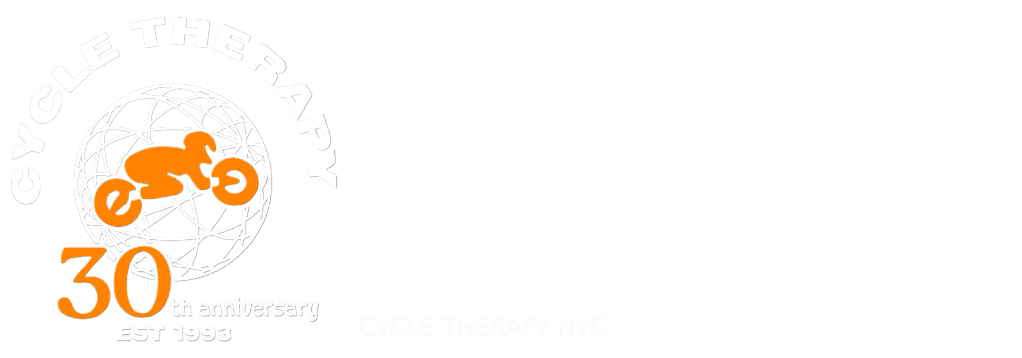Limited Time Offer!
Selling Price -$1,750.00
Selling Price -
$1,750.00

downdraft carburetors with the air cleaner box mounted atop the carburetors, as
opposed to most motorcycles' sidedraft carburetors with their side-mounted air
cleaners. While downdraft carburetors flow air into the engine more efficiently
than sidedraft carburetors, the height of the carburetors and their airbox
required Yamaha to design a large tunnel into the bottom of the gas tank. While
the tank holds 17 liters(4.5 gallons) of fuel, it looks much larger thanks to
the tunnel and suggests that the bike is top-heavy, which it is not.
The XZ550 has a water-cooled engine. At the time, most water-cooled motorcycle engines had fins, intended to suggest the
cooling fins on air-cooled engines, cast into their cylinder heads. While fins
are absolutely necessary on an air-cooled engine — they increase the
surface area of the head, hence improve cooling—they serve no function on a
water-cooled engine. By leaving the fins off the XZ550's engine, it simplified
the engine's manufacturing process, reduced the amount of metal needed to make
the cylinders, and lowered the cost of the engine without affecting its
functionality.
The Yamaha Vision was originally conceived in the late 1970s when motorcycling was at its peak, and spent three years in
development, being overseen by a small group of designers and enthusiasts
rather than "committee think". Several high profile external design
houses contributed to the design of the XZ550 including GK Design Associates
for design, and reputedly Cosworth for the engine and Porsche for the final
drive. The initial models were designed to be a performance bike and GK's goal
was "to make it into the most advanced super sport bike in terms of both
styling and riding performance" The XZ550 succeeded on both fronts, its
comfort on long rides and veritable torque-monster engine matched by its
distinctive deep V-Twin exhaust beat and neck-snapping performance. Sales were
poor and it was not until the bike was re-invented as a touring bike in 1983
that sales picked up, although not enough to see the bike surviving. The bike
was considered "rather B.M.W.-like", in reference to its touring
credentials, and "the most European motorcycle from Japan in recent
memory."
Unfortunately, producing an entirely new product from scratch is never without initial problems, and the Vision suffered
from a few. An off-idle carburetion quirk, known as the "Vision
stumble", meant the first year machines were prone to initial stuttering
on part and full-throttle takeoff. The "Vision stumble" problem,
after months of research, was finally solved by racer Marc Salvisberg, who
later started Factory Pro Tuning. The problem, it seemed, wasn't a Yamaha
development problem at all, but was actually a lean spot, just off idle, caused
by what appeared to be residual casting sand that filled the off-idle bleed
holes at the throttle butterfly plate in the Weber-style Mikuni carb. That
information was immediately relayed to Yamaha U.S., where it was relayed to
Japan and verified. The 1983 models carbureted essentially flawlessly.
In the 1982 model, lightning quick steering was considered too extreme for some, though was highly appreciated by sporting
riders. The weight distribution was 55/45 and the lightly loaded front end
benefited from the installation of a slightly larger than usual front tire. The
front suspension was described as too soft, the rear, even with an adjustable
shock, difficult to dial in. On the electrical side, the Vision had "a
well deserved reputation for eating starters and stators."
The US 1983 model Vision fixed most of the faults, with an improved carburetor eliminating the stumble, air adjustable
front forks firming up the ride and improvi
- $1,750.00
- New York, New York
- Pre-Owned
- 1982
- Yamaha
- Vision 550
- SILVER
- 18,807
- Available

